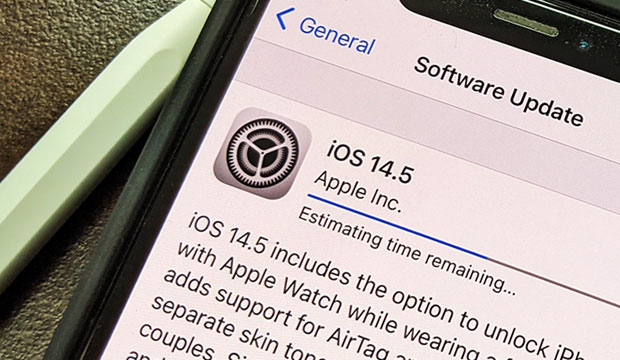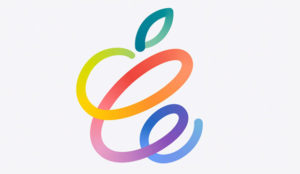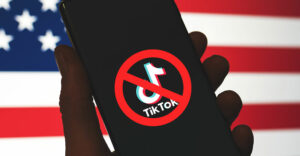More than 90 percent of U.S. users of the latest version of Apple’s mobile operating system are taking advantage of a new feature to block an application’s ability to track their activity on their phones. This is bad news for advertisers.
According to research updated Saturday by Flurry, an analytics company owned by the Verizon Media Group, 96 percent of U.S. users of iOS 14.5 blocked app tracking using the new App Tracking Transparency feature. Worldwide, advertisers fared slightly better with 88 percent of users shutting down application tracking on their phones.
App Tracking Transparency requires an iOS application to inform a user, through the use of dialog boxes, that the app wants to track activity across the phone’s user interface and gives a user the power to deny such access.
Over the roughly two and half weeks since the release of iOS 14.5, Flurry found that the “opt-in” rate for U.S. users rose slightly from two to five percent, while worldwide, rates climbed from 11 to 13 percent.
“I’ve seen four percent, and I’ve seen 38 percent. The real rate is probably somewhere in the middle,” observed Eric Schmitt, a research director and analyst at Gartner.
Either way, the rate isn’t good news for advertisers who depend on app tracking to more precisely target their ads. “Even if it were 50 percent opt-in — which I don’t think most apps are going to see — you’d still be losing the ability to target half your audience with precision,” Schmitt told TechNewsWorld.
Data Predators
Another source of metrics on App Tracking Transparency showed users more willing to opt-in to app tracking. The latest numbers from AppsFlyer, a mobile ad attribution platform, found that from April 28 to May 2, 37 percent of users allowed users to track their phone activity.
Those numbers varied significantly, though, based on application type. For example, social apps had an opt-in rate of 18 percent, while shopping, food and drink, and finance apps have rates of 40 percent or better.
“Applications without brand stickiness are getting hurt the most, but utilities, banks — applications that are used every day because they’re useful and get things done — are seeing a higher than anticipated opt-in rate,” observed Liz Miller, vice president and a principal analyst at Constellation Research.
“Brands that took to heart Apple’s directions on what should be included on that opt-in screen, and use that language to explain not only the what they’re collecting, but the why, are also seeing a higher uptick in opt-in,” she told TechNewsWorld.
“That’s because they’re trying to build a relationship with their customers with the data they collect,” she said. “They can deliver value to their customers for the data they collect.”
That’s not the case for apps collecting data for the sake of collecting data.
“There’s never any appropriate value in a predatory relationship,” she explained. “A predator is never going to use language that says, ‘I’d like to stalk you and pelt you with ads that have nothing to do with you and your buying behavior, but it makes my spend more efficient.'”
Worst Fears Confirmed
Since iOS 14.5 has only been available for a short period of time, it will be some weeks before marketers can get a clear picture of the impact of App Tracking Transparency, noted Greg Sterling, vice president of market insights at Uberall, a maker of location marketing solutions based in Berlin.
“The best data currently available confirms advertisers worst fears,” he told TechNewsWorld. “The Flurry numbers in the U.S. in particular are significantly worse than expected.”
Josh Crandall, CEO and co-founder of NetPop Research, a market research and strategy consulting firm in San Francisco, found the high percentage of users blocking tracking surprising.
“When Apple simply used ‘Privacy’ as their Fall 2020 advertising campaign, I was pretty impressed,” he told TechNewsWorld.
“Privacy has always been somewhat of a concern,” he continued, “but when compared to entertainment value or convenience, it has always performed lower in consumer research.”
“Finally, it seems that consumers are waking up, and Apple has certainly struck an unmet need in the marketplace,” he said.
“We’ll have to keep an eye on the data as users continue to migrate their behaviors up to the latest release,” he added. “Even if the numbers fall to 80 percent opt-out, it will be a game-changer.”
Profound Impact
Crandall maintained that the impact of App Tracking Transparency could be huge in a positive way. “We need to create technologies that support humanity and respecting our privacy is a uniquely human attribute,” he said.
Sterling feels the feature will have a profound impact on marketers.
“Obviously the available data will be dramatically reduced,” he explained. “Google Android will be forced to do something, although they’ll do the ‘lite’ version in all probability.”
“First-party data — as with the death of third-party cookies — becomes much more important, and it unintentionally rewards big companies with lots of first-party data,” he observed.
“There may also be more paid subscription models in the future as a consequence,” he added.
Advertising rates, too, could be affected by App Tracking Transparency.
“Never mind the opt-out rates,” Schmitt declared. “What’s the price going to be on the media?”
“If I can no longer pinpoint with a laser the people who are shopping for my stuff, and I have to cast a wide net and getting a bunch of people who aren’t really relevant, the price has to come down per impression,” he explained.
“So far,” he continued, “prices going down has not been in the vocabulary of Google, Amazon or Facebook. Some new vocabulary may be coming.”
“This is the beginning of the end of the era for hyper-targeted advertising,” he added.
Marketers Will React
However, it’s expected advertisers won’t be passive with the new regime imposed by Apple.
“I anticipate that the platforms and advertisers who depend on tracking information will do their best to disrupt the user experience in order to sway their users to allow them to track their data,” Crandall said.
“In other words,” he continued, “if users do not allow tracking, they will be inconvenienced with additional data entry requirements or a poor content experience.”
Schmitt predicted that for a period of time, ad money will flow from Apple to the Google Android universe. “But then we have nightmare part two next year when tracking cookies are eliminated,” he added.
“There was plenty of advertising around before this hyper-targeted world we are in now, and they’ll be advertising afterwards,” he observed. “It’s just that the techniques will be less precise. They’ll go back to context advertising. If you’re selling Caribbean vacations, advertise on vacation websites.”






























































haha you actually believe this? I have blocked apple.com and anything else apple related, now the battery on the phone lasts much longer and its faster. It does not matter if an app is blocked, the actual OS is constantly phoning home to Apple/Google/Amazon servers. Another illusion of security from a company which is actually one of the worst